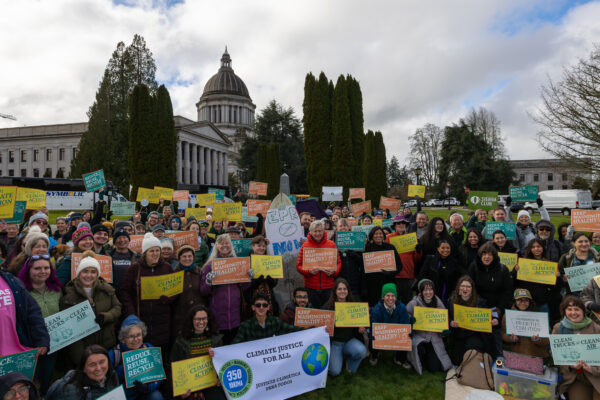Dirt. You probably don’t think about it much. But maybe you should.
Today, National Soil Day, consider what a miracle dirt is: We grow 95 percent of the world’s food in topsoil. This dirt results from years and decades and centuries of seasonal cycles: spring shoots and fall leaves, uncountable trillions of little creatures and microbes living and growing and dying year after year, networks of fungal filaments that connect to each other and countless plants. Dirt isn’t a thing, it’s a teeming, vibrant, essential ecosystem. And it operates on a timescale difficult to grasp when bounded by a human lifespan. It takes about 1,000 years to create just three centimeters of soil.
Almost nothing could live on land without soil. It makes it possible for plants to gain a foothold and grow, forming the basis of everything: turning sunlight into the carbohydrates that we all need for energy. It hosts myriad processes that change minerals and other nutrients into forms that animals can use.
If you’re trying to dig a hole, or to move a wheelbarrow of soil, it may seem like there’s a lot of it. But think on a planetary scale. It’s just a few feet of biologically essential material on a globe that is 8,000 miles in diameter, that is mostly rock and minerals and mostly covered by water. Seen in this context, soil is the most gossamer of layers, a scrim that sets the stage for our life.
And here’s the kicker: We’re wasting this precious soil. Industrial agriculture—intensive tilling, lack of cover crops or leaving fields fallow for a season, pesticides and synthetic fertilizers—all this has stripped topsoil of nutrients, minerals and microbes that support plant life. To add to the damage, bad water management and erosion carry away the work of centuries with the rain.
Because of conventional farming, the world has lost nearly half of its most productive soil in the last 150 years. Studies from the United Nations predict that 90% of the world’s topsoil will be at risk by 2050.
Before you file this away in the doomscroll part of your brain, as a huge unsolvable problem, take heart that scientists largely agree that there’s lots we can do: Simply put, we need to expand agricultural systems where we don’t till the soil and where we leave crop stubble to compost into soil. We need to stop overgrazing and to cut way down on the use of synthetic fertilizers and pesticides.
You may be thinking, “But I’m not a farmer!” That’s OK, most people aren’t. There are many ways you support healthy soil in your community:
- Even if you don’t have a yard, save your kitchen scraps for compost. Don’t live in a municipality that collects compost? There are more alternative composting programs than you might think.
- If you celebrate Christmas, make sure your tree lives on after the holiday. Some cities and towns pick up trees to be chipped for mulch. In other areas, you can drop trees off to be ground up for compost.
- When you can, buy local and/or organic produce, which is likely to have grown with fewer problematic practices.
- If you have outdoor space, consider letting the leaves sit in the fall. Rake them off the lawn, if you have one, and mound them around trees and in flower beds. They form a natural mulch that prevents weeds. They protect your plants’ root systems during the winter. Over several years, they will create soil that nurtures your garden.
- Try to minimize your use of pesticides and fertilizers.
And next time you get your hands dirty, rejoice before you wash it off. Happy National Soil Day!



